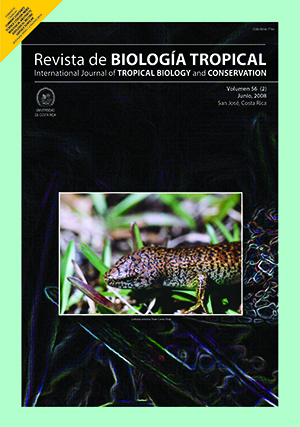Abstract
Free-living amebae (FLA) are known to occur worldwide in water- related biotopes, but only limited information is available on these organisms in developing countries and so far no information on their presence is available from Nicaragua. The aims of this study were to evaluate the prevalence of potentially pathogenic Acanthamoeba spp. and Naegleria spp. in different water sources to which the population of León municipality is exposed. Since pathogenic amebae are thermotolerant, we were especially interested in the occurrence of FLA in geothermal areas. Water samples were collected from León area in Nicaragua: 88 samples were from rivers and springs, 111 from wells, 74 from water taps and 21 from water tanks in urban and suburban León and from three nearby geothermal areas of San Jacinto, Posoltega and Tipitapa. Amebae were identified using morphological and physiological criteria, immunohistochemical staining procedures and molecular methods. Indirect immunofluorescent test was performed on cysts and trophozoites fixed on microscopical slides and incubated for 30 min at room temperature in separate experiments with the following antibodies: rabbit-anti N. fowleri/N. lovanensis (Nf-Pab), mouse monoclonal antibody anti N. fowleri (Nf-5D12u), rabbit antibodies against Acanthamoeba spp. And fluorescent in situ hybridization (FISH) was performed using 18S rRNA targeted fluorescent oligonucleotide probes. Probes: GSP for the detection of Acanthamoeba and NAE G1088 for the detection of Naegleria. Free-living amebae were recovered from approximately 43% of the samples. Acanthamoeba spp. was found in 21% of samples from León municipality and in 2% of samples from geothermal areas. Amoeboflagellates were found in 10% of samples from León and in 19% in geothermal areas. Fifty three percent of tested wells in the geothermal area contained thermotolerant amoeboflagellates. Naegleria spp. was identified in 24 out of 39 (61.5%) of isolated amoeboflagellates. Twelve of them were assigned to N. lovanenesis while none of the isolates could be identified as N. fowleri. However, the common presence of thermotolerant Naegleria in water, specially N. lovanensis, which is an indicator species for N. fowleri, suggests that also this pathogenic amoeba may pose a risk to public health in the area. On the other side, direct pathogenicity, free-living amebae are receiving increasing attention as reservoirs and potential vehicles for the transmission of bacteria in the environment. Thus the information provided in this study may serve as base-line for future studies on the role of free-living amebae e.g. in waterborne-disease outbreaks in the region. Among such potentially important enteropathgens are Vibrio cholerae, E. coli 0157, and Helicobacter pylori.##plugins.facebook.comentarios##

This work is licensed under a Creative Commons Attribution 4.0 International License.
Copyright (c) 2008 Revista de Biología Tropical
Downloads
Download data is not yet available.


